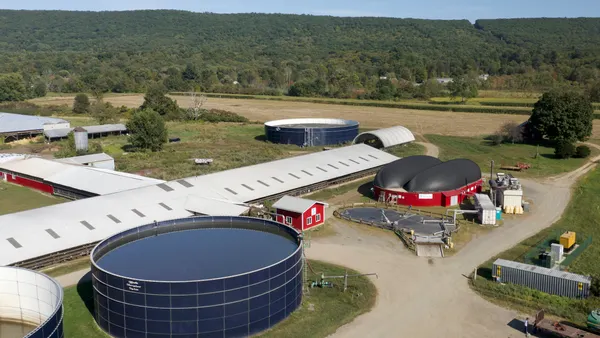Dive Brief:
- Lawmakers from both sides of the aisle have introduced the Federal Mechanical Insulation Act of 2023 to the House of Representatives this week, according to an announcement from the Mechanical Insulators Labor Management Cooperative Trust.
- The bill aims to promote a widespread adoption of mechanical insulation that can reduce emissions, facilitate cost savings and improve safety across industrial applications, commercial facilities and government buildings.
- LMCT said the measure, which targets roughly 350,000 federal buildings, will encourage domestic manufacturing of mechanical insulation, creating thousands of jobs.
Dive Insight:
Unlike the practice of insulating building envelopes, which are found in walls and roofs, mechanical insulation is used to insulate equipment and processes, including hot and cold mechanical piping, ductwork, HVAC systems, refrigeration and other high- and low-temperature applications. Mechanical insulation systems that work properly protect workers from burns on hot surfaces and reduce the energy used for reheating and recooling by maintaining the temperature in pipes and related equipment.
The FMIA, House Resolution 4663, introduced by Reps. Randy Weber, R-Texas, and Linda Sanchez, D-Calif., will provide “an important audit metric for regulators to include when assessing federal buildings’ measure of mechanical insulation efficiencies,” the release said.
The federal government is the largest energy user in the U.S. In 2021, it consumed more than 344 trillion Btu of energy and 119 gallons of water, according to Department of Energy data.
The National Energy Conservation Policy Act, part of the National Energy Act 1978, lists energy conservation measures across buildings, industry and transport. Section 432 of the Energy Independence and Security Act of 2007 incorporates changes to Section 543 of the NECPA, creating a statutory requirement for federal agencies to conduct energy and water use evaluations. These evaluations include energy audits of federal facilities every four years to identify potential savings measures. This section, however, does not define comprehensive energy and water evaluations.
The FMIA seeks to clarify that mechanical insulation energy audits qualify under energy and water evaluations. As part of the changes, mechanical insulation property will be defined as “materials, facings and accessory products that are part of a mechanical system and that reduce energy loss” from that system. The FMIA also suggests that proper installation of mechanical insulation will result in tangible energy- and water-saving measures, and therefore qualify under energy and water evaluations.
Pete Ielmini, executive director of Heat and Frost Insulators LMCT, which works with more than 1,500 U.S. contractors, said that insulations previously in place in older buildings are often removed during renovations and that they don’t get replaced or upgraded once the renovation is completed.
“Because [mechanical insulation] is overlooked, building owners and facilities managers don’t realize the importance of ductwork and the insulation that goes on in the pipes,” Ielmini said. “If proper insulation has not been done and it’s not working efficiently and the pipe is bare, the mechanical system will have to work longer and harder to pump heat into a room, for instance. And the longer a mechanical system operates, the more the CO2 emissions."
Ielmini added that calculating the amount of energy wasted due to a pipe that has not been insulated and factoring in the insulation and installation costs would generate a return on investment anywhere between six months and two years, depending on the building type and how much insulation is needed.










